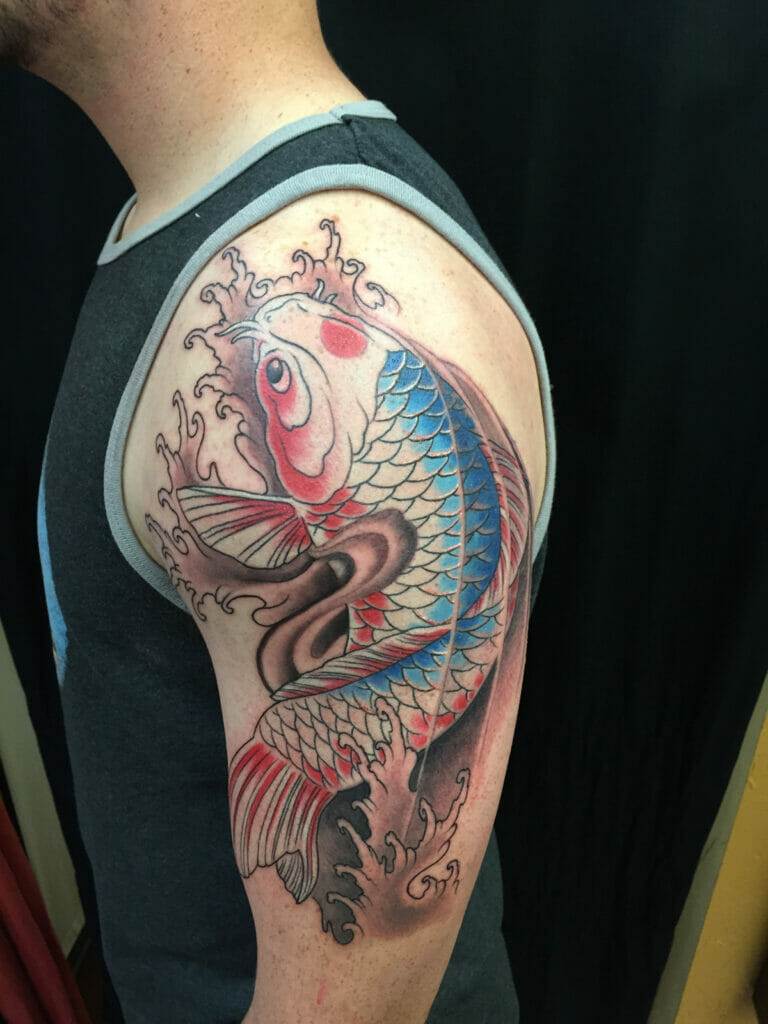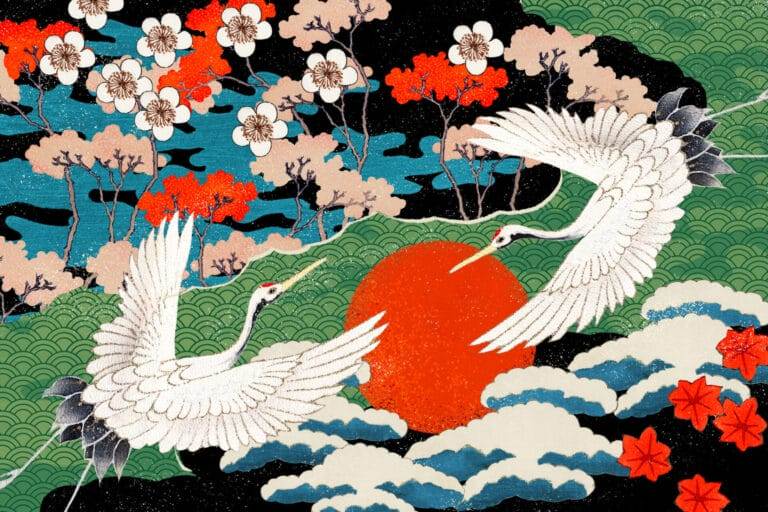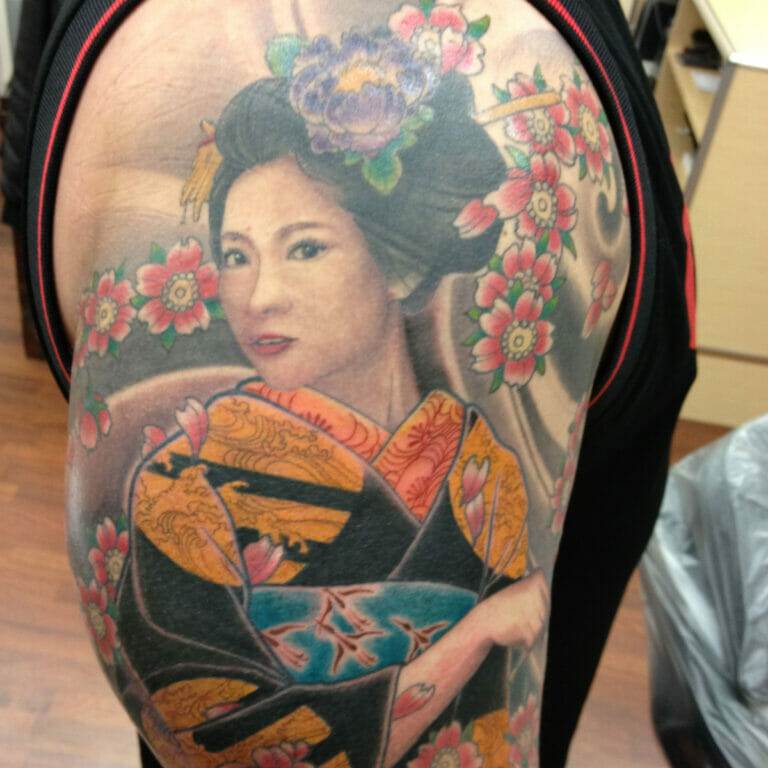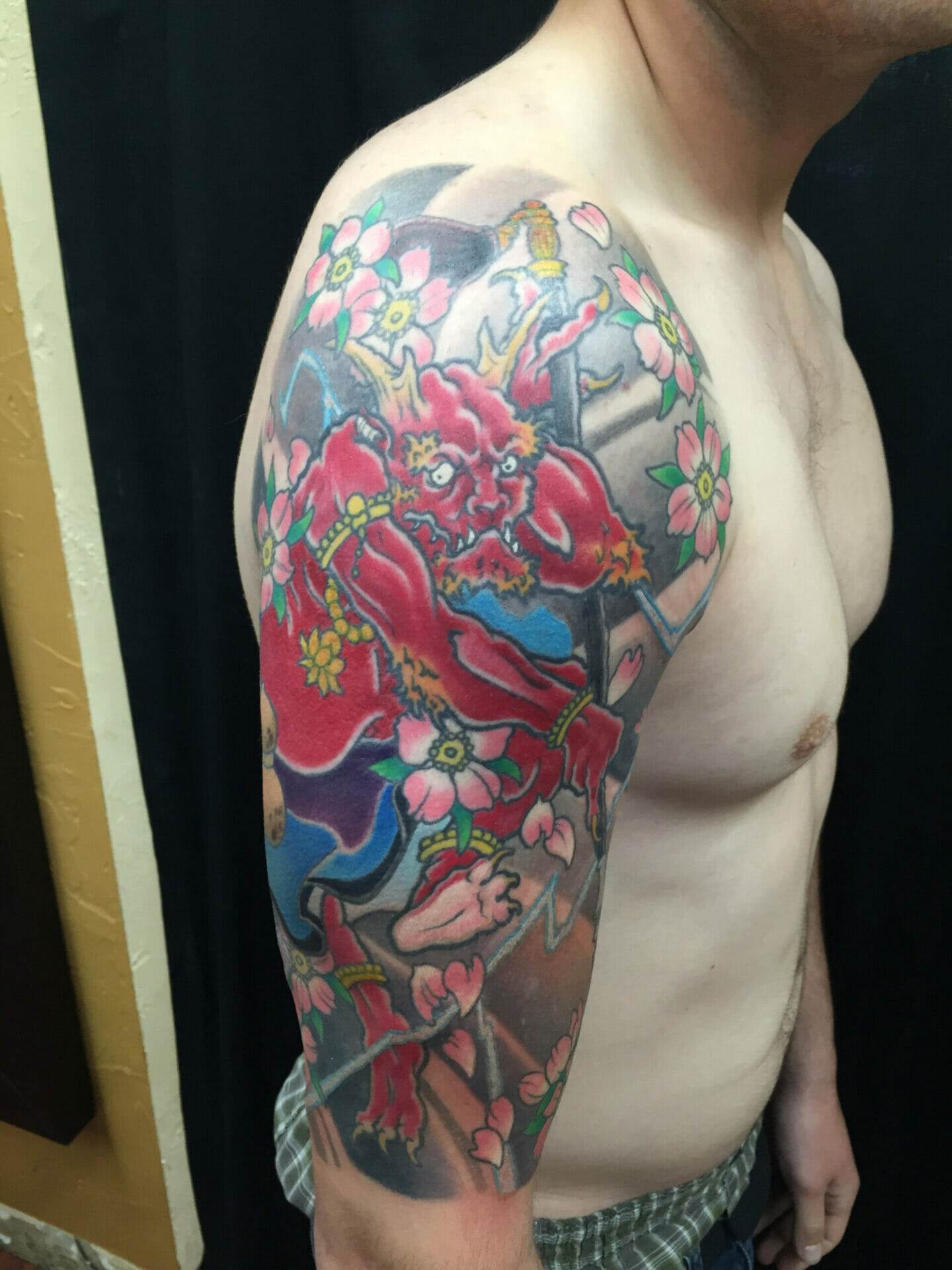
Japanese style tattoos, also known as Irezumi, have gained immense popularity in the Western world in recent years. These intricate and vibrant tattoos are not only visually stunning but also hold deep cultural significance. The art of Japanese tattooing has a rich history that dates back centuries, and its symbolism and motifs are deeply rooted in Japanese culture. In this article, we will explore the origins of Japanese style tattoos, the symbolism behind them, their evolution over time, and their enduring popularity in modern society.
The popularity of Japanese style tattoos in the Western world can be attributed to several factors. Firstly, the intricate and detailed designs of these tattoos are visually striking and unique. The use of bold colors, mythical creatures, and traditional Japanese motifs make these tattoos stand out from other tattoo styles. Additionally, the cultural allure of Japan has captivated people around the world. From its rich history and traditions to its unique art forms and aesthetics, Japan has always been a source of fascination for many. Japanese style tattoos offer a way for individuals to connect with this culture and express their admiration for it through body art.
Key Takeaways
- Japanese style tattoos have a rich cultural significance and history.
- Traditional Japanese tattoos were used to signify social status and convey spiritual beliefs.
- Contemporary Japanese tattoos have evolved to incorporate new styles and techniques.
- The popularity of Japanese style tattoos in the Western world can be traced back to the influence of Japanese pop culture.
- Japanese style tattoo artists use specialized tools and techniques to create intricate designs.
The Origins of Japanese Style Tattoos: A Brief History
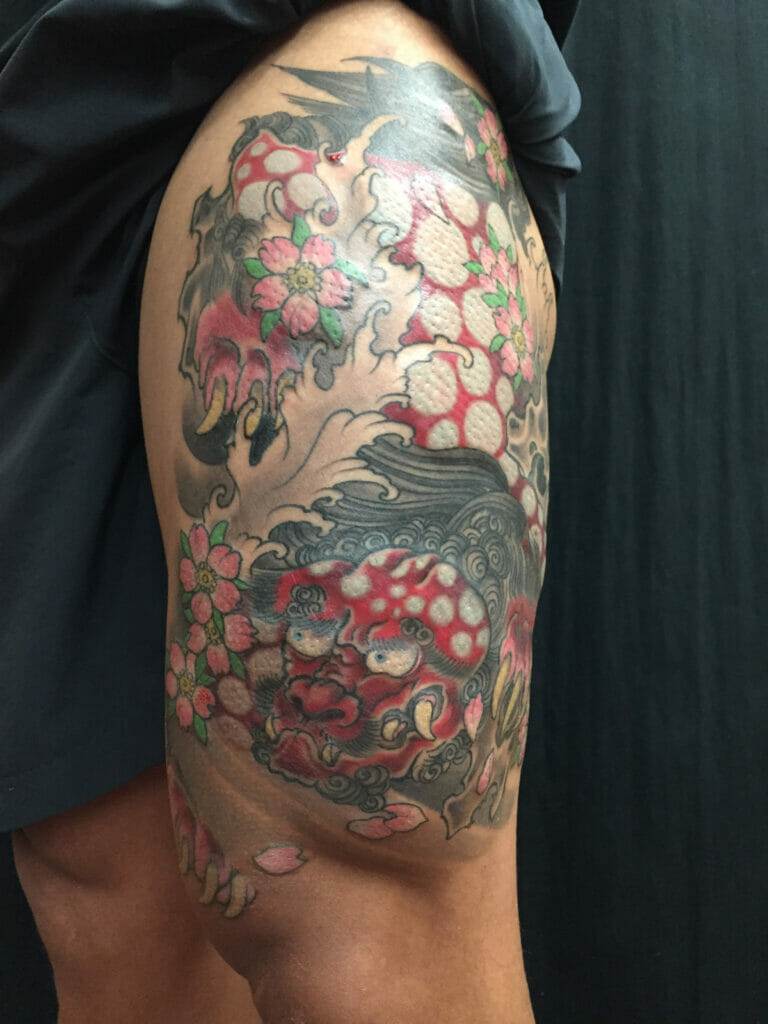
Tattooing has a long history in Japan, dating back thousands of years. However, it was not until the Edo period (1603-1868) that tattoos became associated with criminality and were used as a form of punishment. Criminals were often marked with tattoos to identify them as outcasts and to serve as a deterrent for others. This association with criminality led to a negative perception of tattoos in Japanese society for many years.
Despite this negative perception, tattooing continued to thrive underground during the Edo period. Tattoo artists, known as Horishi, developed their own unique style and techniques. They drew inspiration from traditional Japanese art forms such as ukiyo-e (woodblock prints) and kabuki theater. These early Japanese tattoos often depicted mythical creatures, gods, and heroes from Japanese folklore.
The Symbolism Behind Japanese Style Tattoos: What Do They Mean?
Japanese style tattoos are known for their rich symbolism and deep meanings. Each element and motif in these tattoos carries its own significance. Some common symbols found in Japanese style tattoos include dragons, koi fish, cherry blossoms, geisha, samurai, and phoenixes.
Dragons are a popular motif in Japanese style tattoos and symbolize strength, wisdom, and good fortune. Koi fish, on the other hand, represent perseverance and determination. Cherry blossoms are a symbol of beauty and the transient nature of life. Geisha tattoos often represent femininity, grace, and elegance. Samurai tattoos are associated with honor, loyalty, and bravery. Phoenix tattoos symbolize rebirth and transformation.
These symbols and motifs are deeply rooted in Japanese culture and reflect the values and beliefs of the society. They serve as a way for individuals to express their identity, beliefs, and aspirations through body art.
The Evolution of Japanese Style Tattoos: From Traditional to Contemporary
| Year | Number of Japanese Style Tattoo Artists | Percentage of Tattoo Enthusiasts with Japanese Style Tattoos | Popular Motifs |
|---|---|---|---|
| 1990 | Less than 10 | Less than 5% | Koi fish, dragons, cherry blossoms |
| 2000 | 50+ | 10% | Geishas, samurais, Hannya masks |
| 2010 | 200+ | 25% | Yokai, Oni, Irezumi patterns |
| 2020 | 500+ | 40% | Neo-traditional Japanese motifs, anime characters, pop culture references |
Japanese style tattoos have evolved significantly over time. While traditional Japanese tattoos were characterized by bold lines, vibrant colors, and intricate designs, contemporary artists have put their own spin on these traditional elements.
One notable evolution in Japanese style tattoos is the incorporation of Western tattooing techniques. Contemporary artists often blend traditional Japanese motifs with realistic shading and three-dimensional effects commonly seen in Western tattooing. This fusion of styles has resulted in a unique and modern interpretation of Japanese style tattoos.
Another evolution in Japanese style tattoos is the inclusion of personal elements and narratives. Many individuals now choose to incorporate their own stories, experiences, or interests into their tattoos. This personalized approach allows for a deeper connection between the individual and their tattoo.
The Popularity of Japanese Style Tattoos in the Western World: How Did It Start?
The popularity of Japanese style tattoos in the Western world can be traced back to the late 19th and early 20th centuries. During this time, Japan began to open up to the West, and Westerners were exposed to Japanese art and culture for the first time. This cultural exchange sparked a fascination with all things Japanese, including tattoos.
In the early 20th century, Japanese tattoo artists began traveling to the West and showcasing their skills at international tattoo conventions. These artists introduced Westerners to the art of Japanese tattooing and its rich history and symbolism. This exposure led to a growing interest in Japanese style tattoos among Western tattoo enthusiasts.
The Art of Japanese Style Tattooing: Techniques and Tools
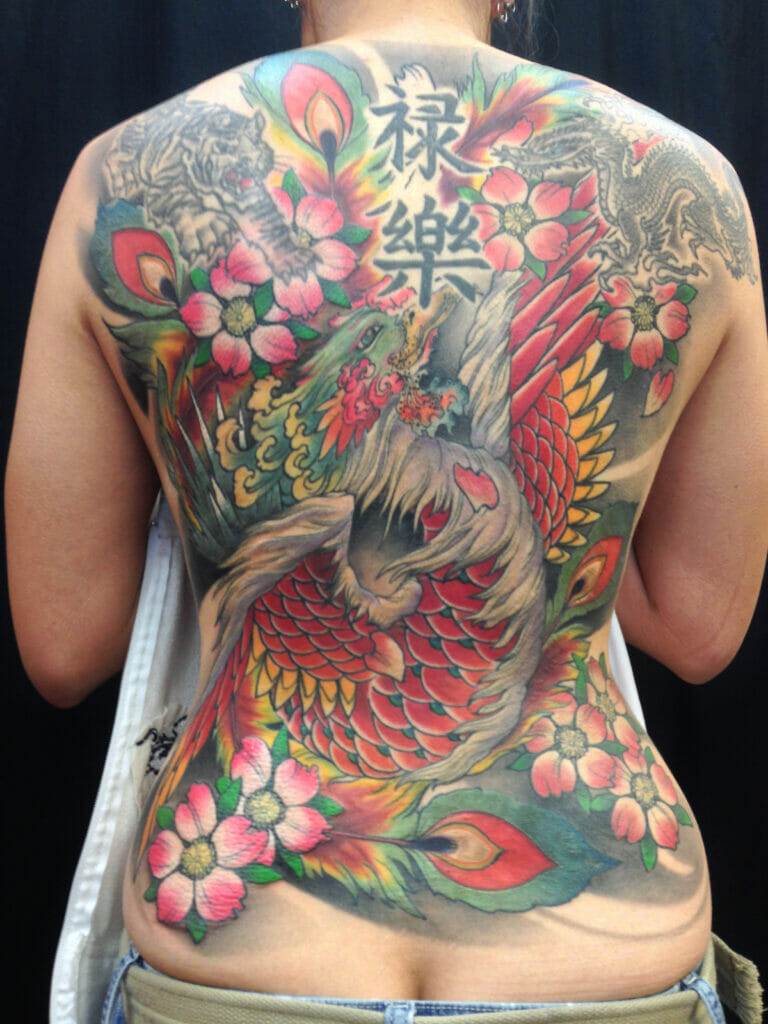
Japanese style tattooing, or Irezumi, is a highly specialized art form that requires years of training and experience. The techniques and tools used in Japanese style tattooing differ from those used in Western tattooing.
One of the key techniques used in Japanese style tattooing is called tebori, which translates to “hand-carved.” Tebori involves using a handheld tool called a nomi to manually insert ink into the skin. This technique allows for greater control and precision, resulting in fine lines and shading.
In addition to tebori, contemporary Japanese style tattoo artists also use modern tattoo machines for certain aspects of their work. These machines allow for faster and more efficient tattooing, especially when it comes to filling in large areas or adding color gradients.
The Role of Japanese Style Tattoos in Yakuza Culture: Fact or Fiction?
Japanese style tattoos have long been associated with Yakuza, the Japanese organized crime syndicates. Yakuza members often sport full-body tattoos that serve as a form of identification and loyalty to their gang.
However, it is important to note that not all individuals with Japanese style tattoos are affiliated with the Yakuza. In fact, the negative association between tattoos and criminality in Japan has led to discrimination against individuals with tattoos, even if they are not involved in criminal activities.
It is also worth mentioning that the Yakuza’s use of tattoos has been romanticized and exaggerated in popular culture. While tattoos do play a role in Yakuza culture, they are just one aspect of a complex and secretive organization.
The Enduring Legacy of Japanese Style Tattoos in Modern Society
Japanese style tattoos have a deep cultural significance and continue to be popular in modern society. Their intricate designs, rich symbolism, and connection to Japanese culture make them a unique form of self-expression.
The popularity of Japanese style tattoos in the Western world can be attributed to their visual appeal, the cultural allure of Japan, and the influence of talented artists who have introduced and popularized this art form.
As Japanese style tattoos continue to evolve and adapt to contemporary styles and techniques, their enduring legacy in modern society is a testament to their timeless beauty and cultural importance. Whether it’s a small cherry blossom tattoo or a full-body Irezumi, Japanese style tattoos will continue to captivate and inspire people around the world for generations to come.
If you’re interested in the intricate beauty of pointillism in ink, you’ll love this article on dot stipling tattoos. It delves into the mesmerizing technique of creating tattoos using tiny dots, resulting in stunning and detailed designs. Check out the article here to learn more about this unique style of tattooing.
FAQs
What are Japanese style tattoos?
Japanese style tattoos, also known as Irezumi, are traditional tattoos that originated in Japan. They are characterized by bold, intricate designs featuring mythical creatures, flowers, and other elements of Japanese culture.
What is the history of Japanese style tattoos?
Japanese style tattoos have a long and rich history dating back to the 5th century. They were originally used to mark criminals as a form of punishment, but later became popular among the working class as a symbol of strength and resilience.
What is the significance of Japanese style tattoos?
Japanese style tattoos are deeply rooted in Japanese culture and are seen as a symbol of strength, courage, and perseverance. They are also associated with the yakuza, Japan’s organized crime syndicates, and are often used to signify membership in these groups.
What are some common designs in Japanese style tattoos?
Common designs in Japanese style tattoos include dragons, koi fish, cherry blossoms, samurai warriors, and geishas. These designs often have symbolic meanings and are chosen based on the individual’s personal beliefs and values.
What is the process of getting a Japanese style tattoo?
Getting a Japanese style tattoo is a lengthy and painful process that involves using a hand-held needle to inject ink into the skin. The process can take several sessions and may require multiple visits to the tattoo artist. It is important to choose a reputable and experienced tattoo artist to ensure a safe and successful tattooing experience.

